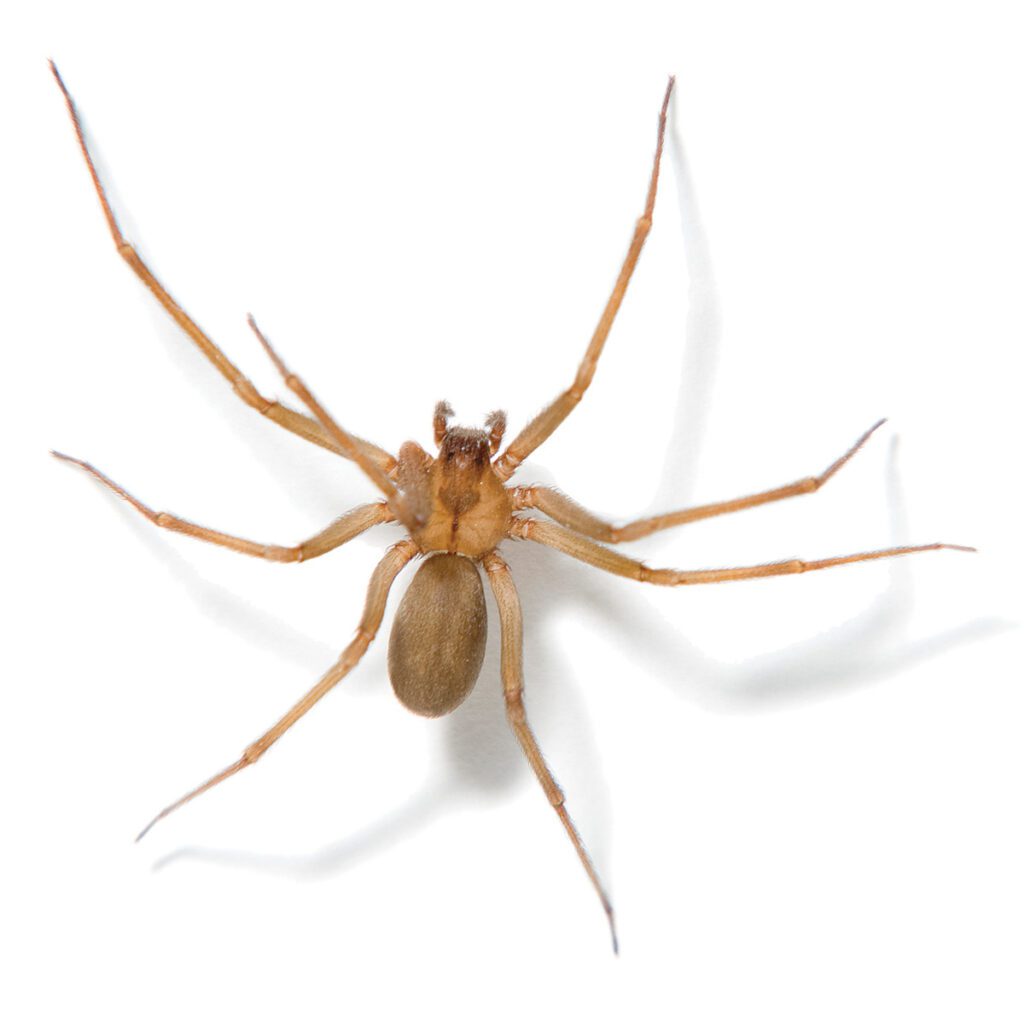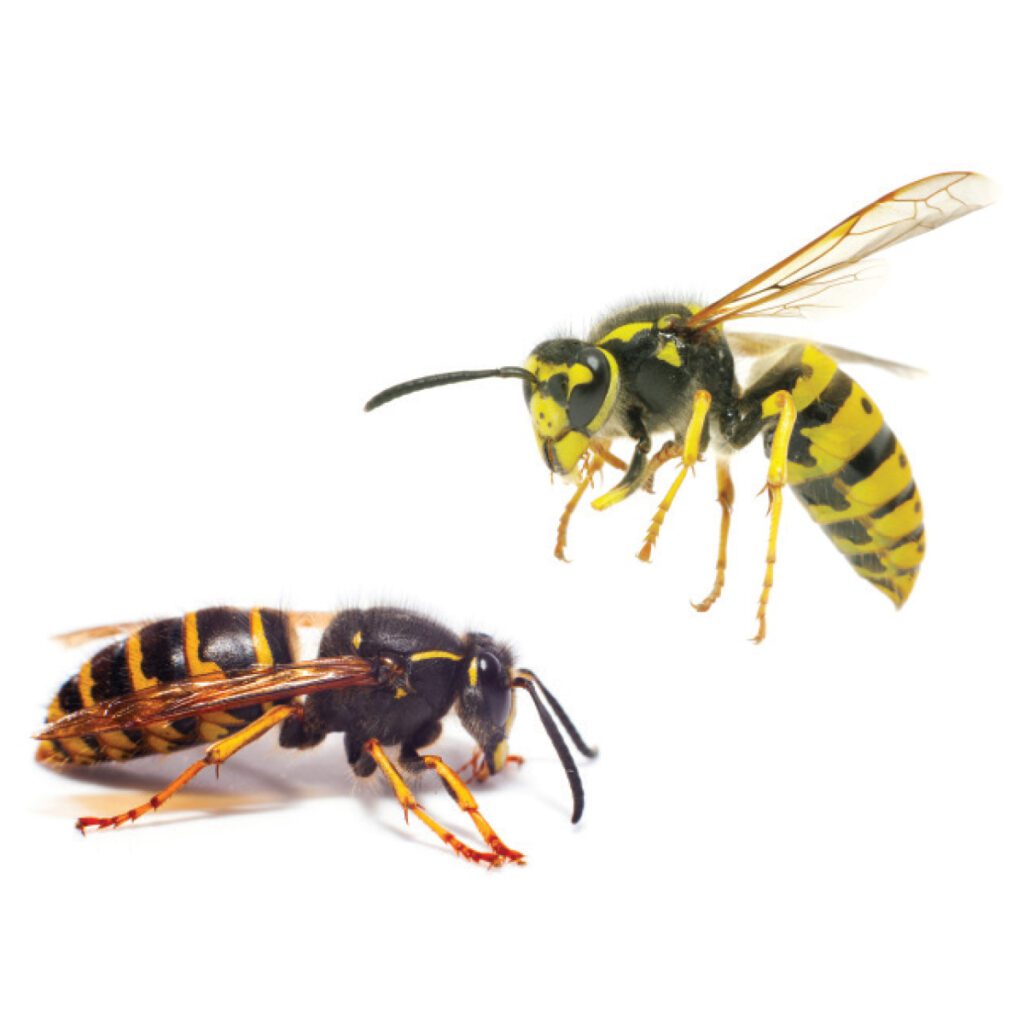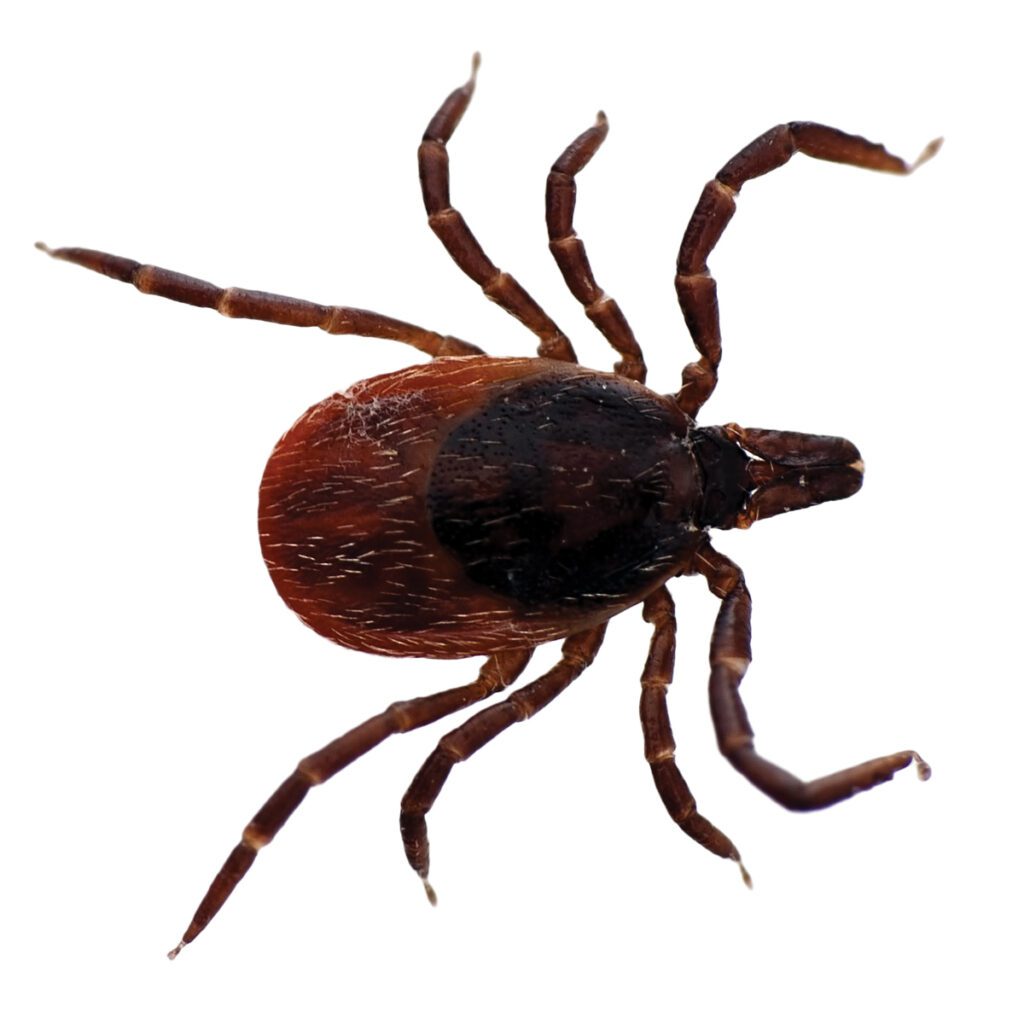What Owners Should Know About Fleas, Ticks, and Heartworms
Long days and warm summer weather mean more time spent outside with family and friends. That being said, more time outdoors can lead to more run-ins with potential pests. Read on to find out how to identify harmful summer insects and the best ways to treat their associated bites and stings.
Spiders
More than 30% of the U.S. population suffers from arachnophobia – a fear of spiders. That’s because some of these creepy crawlers can do major damage. This summer, make sure to be on the lookout for these two variations.
Black Widow
Appearance. If you spy a black spider with a red hourglass on its underside, beware, it’s not your friendly neighborhood Spiderman.
Cause for Concern. Female black widows are venomous, and their bites can affect humans. When bitten, venom travels through the victim’s bloodstream and can affect the nervous system. Black widows are known to be shy spiders though, so bites are unlikely if you avoid placing your hands where you cannot see them.
Symptoms. While some people don’t even notice they’ve been bitten, others will feel a sharp pain. Symptoms associated with the bite can vary depending on the location of the bite, how much venom was injected, and a person’s sensitivities. But they commonly include severe cramping of back and abdominal muscles, fever, labored breathing, and tremors.

Bite Treatment. If you fear you have been bitten by a black widow, apply ice to the bite location and seek medical treatment immediately. In severe cases, your doctor may inject you with antivenom.
Where They Are Found. Black widows enjoy dark, warm, enclosed spaces, and are commonly found around the perimeter of the home.
Brown Recluse
Appearance. These brown spiders are just under an inch in length and have a dark, violin-shaped mark on the top of their bodies.
Cause for Concern. Though they rarely bite, brown recluses pack a serious venomous punch. For anyone with a poor immune system, brown recluse bites can cause severe, whole body reactions that require immediate medical attention.
Symptoms. Symptoms from a bite tend to appear anywhere from 2 to 8 hours following the bite, and the most common symptoms are itching, redness, and blistering around the bite site. The venom from the spider will destroy skin and tissue around the wound, leaving a hole beneath the blister.
Bite Treatment. If you suspect you have been bitten by a brown recluse, you should seek medical treatment immediately. Wash the bite area with soap and water, elevate the limb, and tightly tie a bandage around the wound to slow the spread of venom. Ice the wound on and off for 10 minutes at a time.


Where They Are Found. Brown recluses tend to prefer dark, dry areas like closets, basements, and sheds. They hibernate in winter, which means they are out in full force by summertime.
An Expert Weighs In
Bees & Wasps
Bees and wasps are easily confused given their similar appearance, but their differences are significant. Bees pollinate flowers and can only sting once. Wasps (which include yellow jackets and hornets, among many other varieties) on the other hand, are the ones you need to look out for on your summer picnic.
Hornet & Yellow Jacket
Appearance. It goes without saying that yellow jackets are, well…yellow. And black. These are the pests that tend to come to mind when people think “bee.” Hornets are generally black and white or brownish red.
Cause for Concern. These aggressors are easily provoked. They can sting multiple times and will chase you hundreds of yards to do so, if they feel threatened or provoked. The venom in a yellow jacket or hornet’s stinger can trigger severe allergic reactions in some people.
Symptoms. For someone who is allergic to yellow jackets or hornets, he or she will break out in hives, have difficulty breathing, and could even go into anaphylactic shock when stung. Non-allergic reactions from yellow jacket and hornet stings will cause redness, pain, and itching at the sting site.
Sting Treatment. If you are not allergic to yellow jackets or hornets, a cold compress and Benadryl can alleviate symptoms. For those with severe allergies, it is vital to always carry an EpiPen.


Where They Are Found. Yellow jackets and hornets tend to nest in the ground, so if you see them flying low to the ground, you might be near a hive.
An Expert Weighs In
Ticks
These small arachnids are known for spreading dangerous diseases. Fortunately, the diseases they carry have clear signs, symptoms, and treatments.
American Dog Tick & Brown Dog Tick
Appearance. Both the American dog tick and the brown dog tick are reddish brown in color, and range in size anywhere from ⅛ inch to ½ inch if they’ve fed recently.
Cause for Concern. Both of these ticks spread Rocky Mountain spotted fever, which has one of the highest incidence rates here in Tennessee.
Symptoms. Rocky Mountain spotted fever symptoms, which usually present themselves two to five days after the tick bite, include fever, nausea, muscle pain, and sometimes red eyes, paired with a non-itchy red spotted rash on your arms, wrists, ankles, and sometimes chest and back.
Bite Treatment. Antibiotics are necessary for individuals who develop Rocky Mountain spotted fever, and the earlier the better. Without treatment, cases have been known to be fatal.


Where They Are Found. These ticks can be found in the woods or in your backyard. It is important keep your grass cut and your yard free of debris to avoid these nuisances.
Black-Legged Tick
Appearance. Commonly known as deer ticks, black-legged ticks appear predominantly black when hungry, and turn a bluish gray color when fully engorged.
Cause for Concern. Black-legged ticks can spread Lyme disease. The rash associated with the disease presents itself as a warm, red bullseye surrounding the bite. To transmit the disease, the tick must be attached to you for at least 24 hours.
Symptoms. The most common symptoms of Lyme disease are fever, headache, and muscle and joint pain. They can begin anywhere from three to 30 days after the bite. If left untreated, the disease can prove fatal.
Bite Treatment. Antibiotics are required to treat Lyme disease. Most often, amoxicillin or tetracycline is prescribed.


Where They Are Found. Like the American dog tick and the brown dog tick, these ticks can be found in the woods or in your backyard. Always keep your grass cut and rid your yard of debris.
An Expert Weighs In


As a reminder, Dr. Ballard notes, “While conditions from insect bites can be quite frightening, it is important not to panic when a bite occurs. Medical professionals are always available to provide prompt, in-person evaluation and treatment – or simple reassurance – whenever necessary.”



